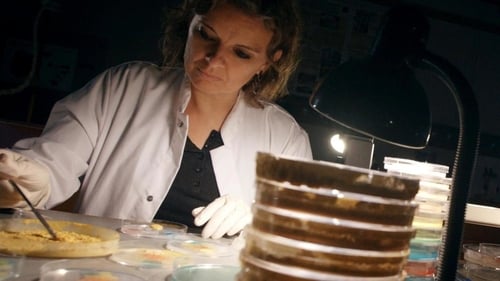
Writer
This documentary outlines the unique properties and latest studies of "Physarum Polycephalum", also known as Blob.

Director
This documentary outlines the unique properties and latest studies of "Physarum Polycephalum", also known as Blob.

Director

Writer
Only twenty-five years ago, the first evidence of self-medicating behaviour among animals was reported among chimpanzees. On the basis of this pioneering research, led by the American Michael Huffman, a new science was founded: "zoopharmacognosy", or the study of animal pharmacopeia. Animals are apparently able to treat themselves actively, to detect natural substances that can provide a remedy for health problems, or to prevent them. The primatologist Michael Huffman explains how he discovered that chimpanzees can heal their diseases with medicinal plants from their environment. The scientist then comments on other very surprising examples: Birds that disinfect their nests by filling them with aromatic plants with repellent properties, a rodent that covers its coat with toxic sap as a poisonous defence against predators and elephants that place mud plasters on their injuries. Some therapeutic behaviours may even be transmitted socially among certain species.

Director
Only twenty-five years ago, the first evidence of self-medicating behaviour among animals was reported among chimpanzees. On the basis of this pioneering research, led by the American Michael Huffman, a new science was founded: "zoopharmacognosy", or the study of animal pharmacopeia. Animals are apparently able to treat themselves actively, to detect natural substances that can provide a remedy for health problems, or to prevent them. The primatologist Michael Huffman explains how he discovered that chimpanzees can heal their diseases with medicinal plants from their environment. The scientist then comments on other very surprising examples: Birds that disinfect their nests by filling them with aromatic plants with repellent properties, a rodent that covers its coat with toxic sap as a poisonous defence against predators and elephants that place mud plasters on their injuries. Some therapeutic behaviours may even be transmitted socially among certain species.

Writer
¿Somos los humanos los únicos seres que ríen? ¡Hoy sabemos que los bonobos aprecian también una buena risa! ¿Cuáles son los últimos descubrimientos sobre los orígenes neuronales y etológicas de la risa? Un acercamiento científico a esta extraña convulsión física.

Director
¿Somos los humanos los únicos seres que ríen? ¡Hoy sabemos que los bonobos aprecian también una buena risa! ¿Cuáles son los últimos descubrimientos sobre los orígenes neuronales y etológicas de la risa? Un acercamiento científico a esta extraña convulsión física.

Director
Pïerre Victor Bouvier, explorer, landed in Oubalski, Eastern Siberia in search of a frozen woolly mammoth.

Director
Neurobiology has shown in the recent years that contrary to the traditional boundaries between animal and plants, plants can feel, move and even think. Over the recent years, a small but growing group of researchers from Austria, Germany, Italy, UK, Japan, South Africa and the USA, has developed a new scientific field of research: the neurobiology of plants. Their discoveries question the traditional boundaries set between the animal and the vegetable kingdom: plants are capable to develop the cognitive process claimed by humans and animals. If plants can move, and feel... Could they possibly think ? In a creative and captivating scientific investigation style, through spectacular specialist photography and CGI, and re-creating scientific experiments, this documentary is bound to change your own perception of plants.







